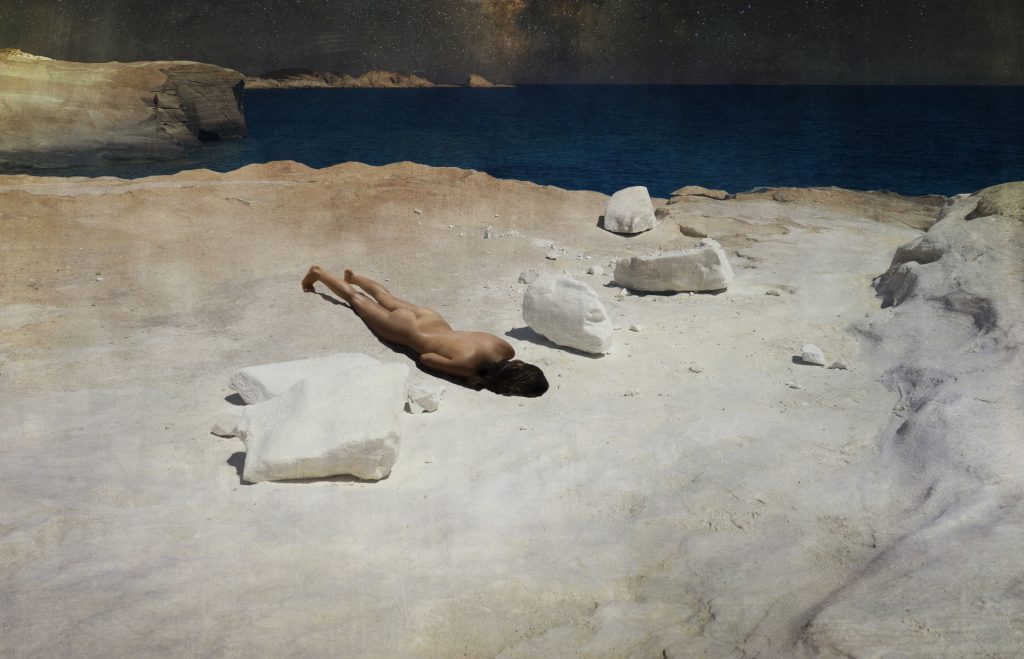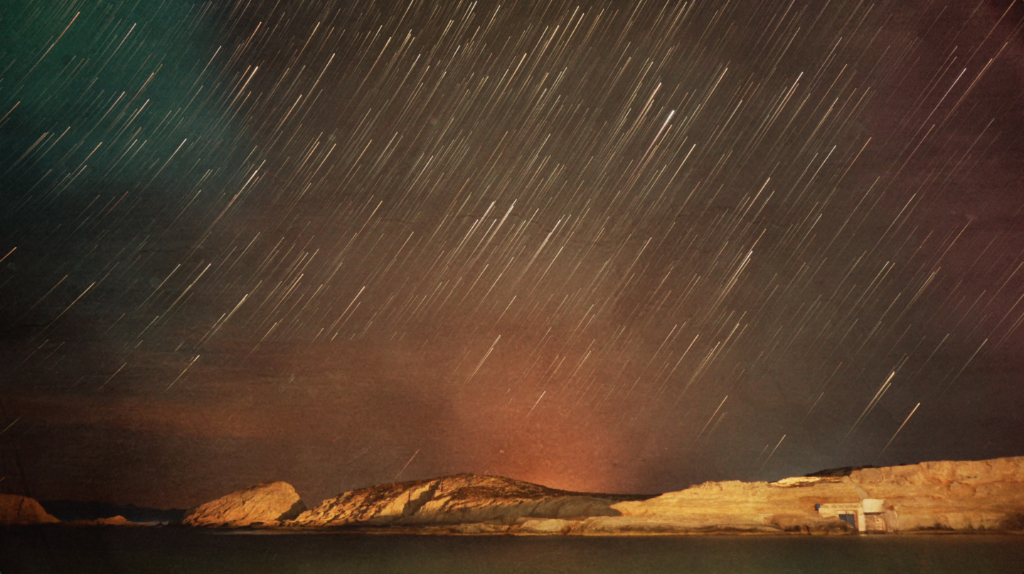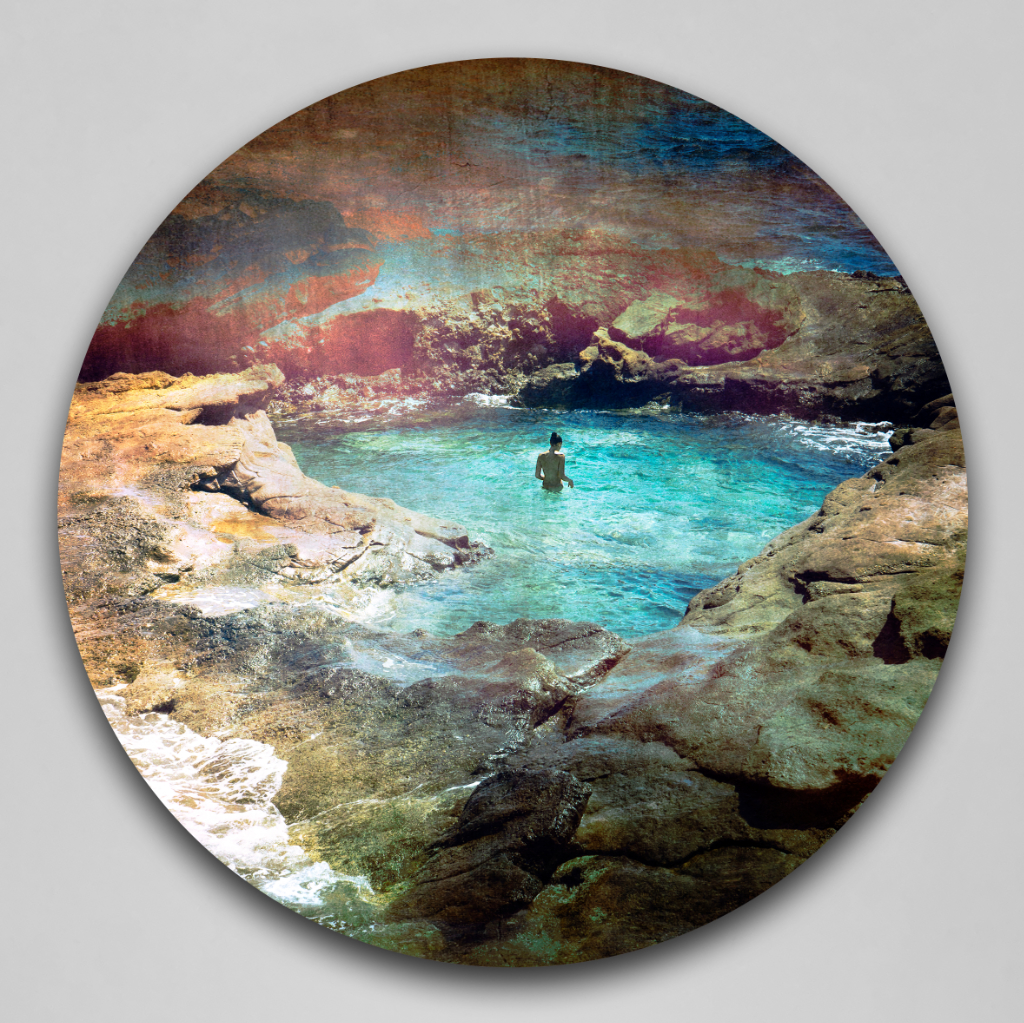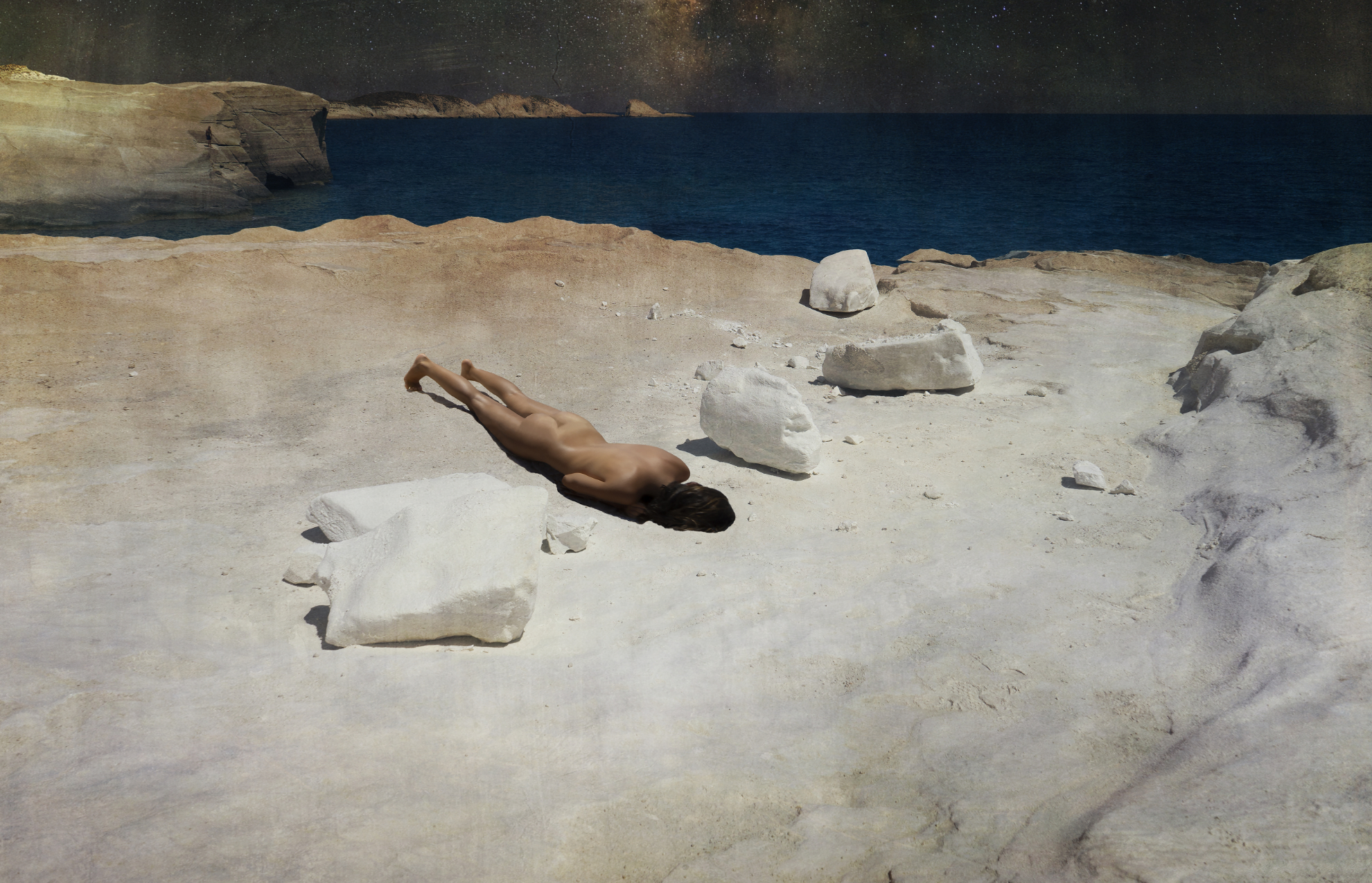Interview by Simona Serban

Artist Laurel Johannesson focuses on generating experiences involving water, and site-specific installations that play into the relations between body – nature, and real – dreams. She devotes a large part of her practice to documenting and altering enigmatic landscapes that seemingly exist beyond the scope of reality, and documents philosophies of temporality and the contemporary interpretations of those philosophies.
What is most striking about Laurel’s practice is the immersive approach she uses technology to create synthetic spaces that uncannily evoke the mystery and unpredictability of natural phenomena. Johannesson uses moving, generative, interactive, and still images to create temporal landscapes that simulate psychologically-charged scenes. Creating links between the natural world and the – the organic and physical processes – and thus advocating for nature’s rightful place within the design industry.
She is currently working on more temporal-based projects, including Hypnos, in which 6,500 images are compiled and over-painted, as well as an upcoming project based on images from her series Situations (an uncanny exploration of place, time, and human positioning) with an interactive element that allows the images to respond to a viewer based on their positioning relative to the image. In Situations, naked figures (often derived from photos of herself) navigate temporal landscapes inspired by the “day for night” film technique, exposing not only the vulnerability of their bodies but also photography’s relationship with reality and natural phenomena.
Johannesson’s print, photographic, interactive, and moving image artworks have been exhibited extensively and included in many public and private collections. She was recently honoured to have her work collected by the Department of Foreign Affairs for one of their Canadian embassies abroad.



You have a unique approach to your craft, as you focus on creating psychologically-charged scenes with the use of images; for those that are not familiar with your work, could you tell us more about it? What intellectual process led you to take this innovative approach to artistic expression- moving, generative, interactive, still images?
I explore physical tension and the psyche through photographic-based still and moving image collages that alter coastlines and beaches into limbo-like spaces. My work often takes place in or around water in site-specific locations and depicts uncanny juxtapositions between body and nature, realism and dream. A large part of my practice is devoted to documenting and altering enigmatic landscapes that seemingly exist beyond the scope of reality. I’m interested in philosophies of temporality and the contemporary interpretations of those philosophies. I’m inspired by the invisible world and inner landscapes, spaces where time is stretched to infinity, where delicate shifts of light can create an eternity, and where sound goes beyond hearing.
Although I have a background in printmaking, painting, and drawing, which could be seen as somewhat traditional artistic pursuits, I’ve always been attracted to technology. Early on, that technology came in SLR cameras and photo-based print techniques. However, when I first started utilising the computer in my work, I felt that I was close to having all of the tools that I needed to realise the images that lived in my head. In addition, my interest in philosophies of temporality and my research in that area feeds my approach to image-making from the technical and conceptual to the theoretical.
This research into temporality not only added to the development of the concept for the interactive piece but also started me thinking philosophically about temporal or liminal spaces. I started photographing the beach after many years of underwater photography. I was totally focused on the water and the perception of suspended time when you are underwater for a long time. However, I began to notice people at the seaside and how they stare at the water, seemingly mesmerised over the years. There is often something in their posture and expression that conveys longing—or that I interpret as longing—for something unreachable or unknowable. I usually include a shoreline or sea cave, as I see the beach as a liminal site, the transformative space between two temporalities.
The beach is a mesmeric place, and to me, it’s the quintessential liminal zone. It is neither land nor sea, an expanse of precariousness that reverberates with the sound of unpredictable seas … placid, serene, and soporific … or unsettled, chaotic, and disconcerting. It is a margin that unveils a space of intensified sensations that are fleeting, idiosyncratic, and fugitive. It is often a place of naked truth, of judgement, a site of initiation into consciousness. It provides the verge of transition from the sanctuary of land to the vastness of the imposing sea. It is a threshold for self-awareness and exploration of aloneness, isolation, and remoteness.
You are a professor at Alberta University of the Arts; what made you become a professor, and what is your teaching style concerning creating uncanny synthetic spaces?
As an undergraduate student, I always thought my professors must have a dream job, talking about art all day long. What could be better? When I was doing my MFA, I had the opportunity to teach a course, and I suppose that solidified it for me. The intellectual exchange with students is a constant source of both motivation and inspiration. Although teaching could be seen as simply the dissemination of information and skills, I believe it is also an ongoing conversation, an interchange realised through a variety of content and divergent approaches that stimulate a student’s growth.
I encourage self-motivation and critical thinking to further students’ ability to investigate and problem solve in their artistic work and life. Viewing art as a language, they begin to understand that their choices in combining concepts, mediums, and techniques are what makes the work uniquely theirs. I seek to create a learning environment where new ideas and approaches to make can be explored, risk-taking is encouraged, and effort is rewarded.
I want to help students find their own voice and discover the things that really matter to them, allowing them to give visual form to their ideas. When meeting with students who are uncertain of their abilities or direction, I encourage them to talk about what interests them in their other classes, at work, at home, in society, in the news, and to figure out how to connect their work to things that they are passionate about.
We discuss how these ideas—which have ranged in various classes from organised religion to extraterrestrials, from environmental issues to struggles with cultural or gender identity, and from social media to fashion and politics—are rich and full of possibility and can all form the basis for a successful practice. I ensure that my students understand that they are being assessed not on whether I “like” or “agree with” their ideas but rather on whether their work is well-thought-out, visually articulate, and technically competent.
Ultimately, I view my role as one of a mentor. I strive to expose students to the widest possible array of art, concepts, and practices, leading to discovering one’s own unique way of researching, observing, and interacting with the world. My objective is to develop in the student a self-motivated practice, an inquisitive and adventurous approach to critical thinking, and a self-confident awareness that will serve them well for not only in what comes next in their academic career but also in their professional practice in the future.
One of your more temporal-based projects, Hypnos, where 6500 images were compiled and over-painted, is made with an interactive element that allows the images to respond to a viewer based on their positioning relative to the image. What do you aim to trigger in the observer’s mind following this immersive approach?
In 2008, I began creating interactive and generative works alongside my digitally manipulated photographic still images. Respiro was a set of small display screens that created an inexhaustible number of image permutations and narratives based on randomness and duration through a generative code algorithm. Another example was an interactive video painting that operated on a generative evolutionary code that allowed audience interaction through a tablet or a smartphone app. They could create their own environment by moving around an underwater video clip, the video leaving a trail or evolutionary history in its wake. Each resulting painting could not be duplicated again as the brush head constantly evolved and changed, never to be repeated.
These interactive generative works provided me with an opportunity to become familiar with working with code and to put into practice some forms of viewer interaction. However, I was frustrated by what I felt was a limitation of generative art and interactive installation. While the primitive forms of self-generative systems (a wind chime is one example) easily maintain their lyrical quality, I felt that as soon as I attempted to bring in any interactive aspect to the work, it often became mechanical in appearance, thus destroying any subtleties, or elements of aesthetic emotion. So, I decided that in addition to advancing my technical skills, I would also begin researching aspects of time that would inform the work more thoroughly and help sort out my misgivings.
After a great deal of research into both the technical aspects of generative and interactive work and the philosophical aspects of temporality, I am now trying to create a more subtly ubiquitous experience for the viewer with works like Hypnos’ as well as a new work that is yet untitled. I do not want the human to be immediately aware that the machine is responsive to them.
But rather, the more time they spend with the image (actually a responsive machine that is disguised as an illuminated photograph), the clearer it becomes that their presence has been noticed and is being responded to. Now, with digital technologies, the artwork can become a simulation of reality and contain the mystery and unpredictability of a natural phenomenon.
Likewise, in Situations – an uncanny exploration of place, time, and human positioning – naked figures navigate temporal landscapes inspired by the “day for night” film technique, exposing the vulnerability of their bodies and their relationship with reality natural phenomena. What attracted you in the first place to use images linked in innovative ways as a means of expressing your art?
Our bodies are the source of how we perceive an environment. Since our bodies are unable to be in two places simultaneously, this corporeal dependency contributes to our understanding of place being spatially and temporally singular. As the day progresses, our bodies align with the movement of the earth. If we do not experience the light of morning and the shadow of night, our experience of time is lost. It is this in-between or liminal space of lost time that I am interested in exploring.
Sun on the waves, and stars in the sky. Where we can experience being in two places at the same time. Or perhaps it’s two different times in the same place. I’m interested in creating a sense of the uncanny. Places that look familiar but are strangely foreign.
I started working with the liminal space of the beach after many years of underwater photography. For a long time, I was focused on the water and the perception of suspended time when you are underwater. However, over the years, I began to notice people at the seaside and how they stare at the water, seemingly mesmerised. Often, something in their posture and expression conveys longing—or what I interpret as longing—for something unreachable or unknowable. The instinctual and physical connection between the body and the sea appears to act as a catalyst for some kind of self-knowledge. The figures in my work are usually depicted alone. Sometimes, there may be another figure in the distance, possibly an “other” of the self.
Sometimes a small group almost imperceptibly in the distance in the water. But the figures are definitely alone and isolated in their remoteness and distancing. I try to take this one step further by using somewhat awkward, uncomfortable, or vulnerable poses, positioning the figures so that they appear engulfed by their surroundings, allowing them to be immersed in a thick cosmos of sensations. The underwater work responded to a singular and sensual connection with the element of water. The work at the shoreline is more of a psychological exploration that allows me more options for a narrative perception of temporality that can still veer to the sensual but can also observe the arcane.
I remember, as a child, realising that the oddness of the night scene that I was watching in a film was due to it being shot in daylight. The “day for night” technique has been used for decades to give the illusion of a night scene while being shot in the daytime under sunlight. Of course, some of the effects of the sunlight remain even after underexposing the image, using a neutral density filter, adding a blue cast, etc. For example, the shadows may look unnaturally sharp, and the sky may be illuminated in a way that no camera could capture the night sky.
These unnatural and somewhat uncanny aspects of the “day for night” technique employed in filmmaking are attractive to me. Although I am not utilising the exact “day for night” technique used in filmmaking, I am trying to replicate some aspects of it through the extreme shadows and brightly lit night sky. I strive to create an image with some subtly uncomfortable or awkward elements that are not immediately obvious to the viewer. The image is neither day nor night. It could be viewed as some sort of purgatory, or perhaps it’s paradise. The strange unease of the uncanny is at the heart of the remembering body.
What would you say is/are the key element(s) that make(s) people stop in their tracks when they meet face-to-face with your creations?
It’s difficult for me to answer for the audience. I hope they recognise the awkward or uncomfortable aspects of what appears to be an inviting and seductive scene. I hope they connect with the temporal shifts and are delighted by the unexpected motion. Perhaps I experienced the mystery and unpredictability of a natural phenomenon.
You had a new solo exhibition, It’s not the end of the world, at Herringer Kiss Gallery that ended on March 5; what did the public discover in this new experience?
“It’s not the end of the world” includes fourteen recent works and flows through the entire gallery space. Work from the “Situations” series dominates, and my recurring cast of figures appears throughout in their temporal environments. In addition, there are images that are directly printed on folded aluminium, lightboxes and two new moving image works that I’m particularly excited to be exhibiting for the first time, I tried not to listen, but it came back louder (Cherry Blossom Version) and You were always too much, and never enough (Swarm Version).
What is your chief enemy of creativity?
Inaction.
You couldn’t live without…
Curiosity.






